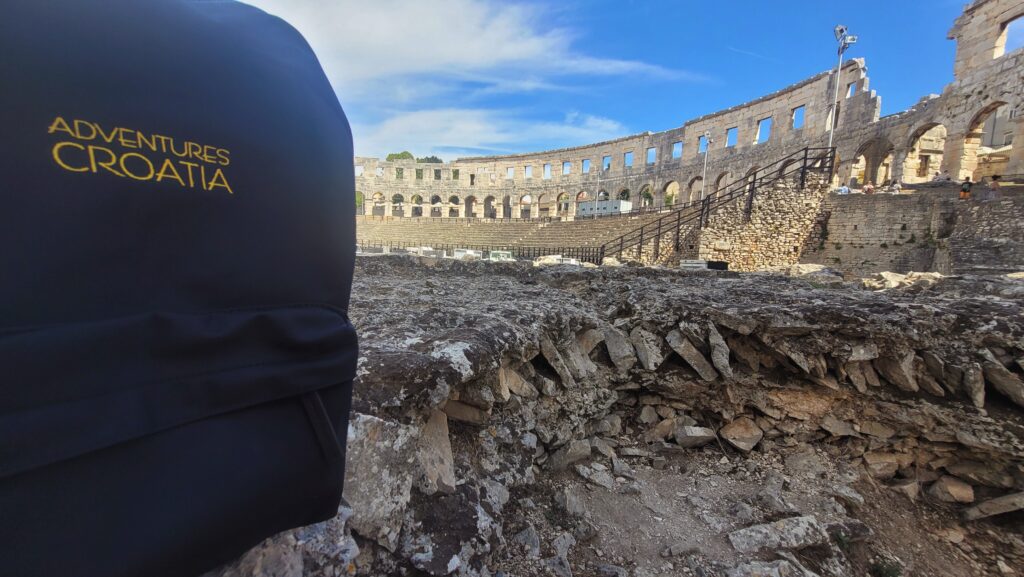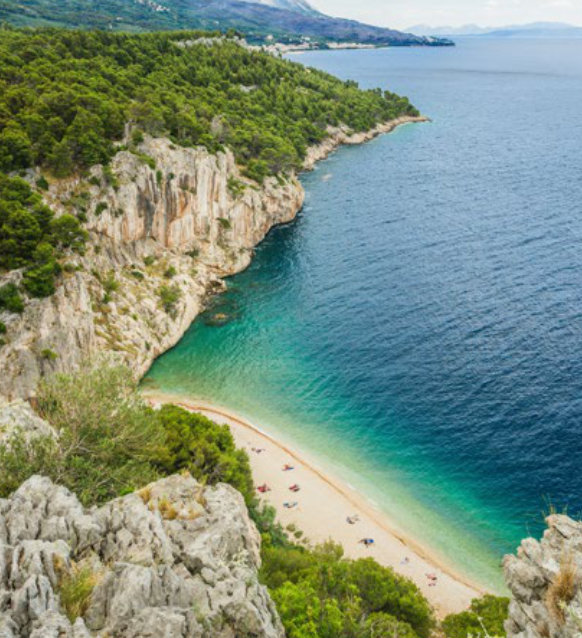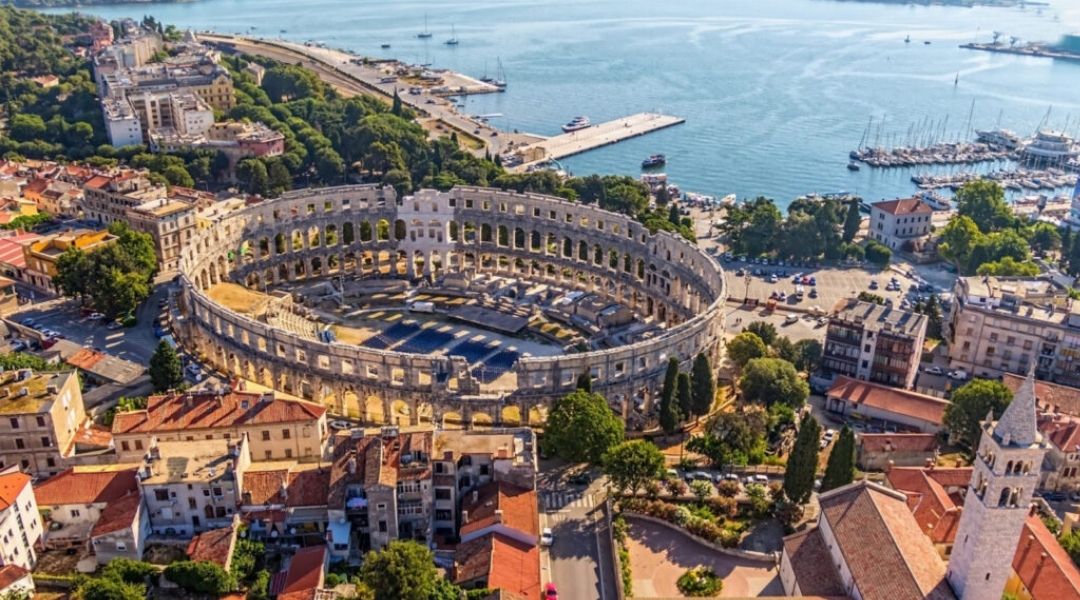Visiting Croatia last summer was a beautiful and fulfilling experience. Most people leave their homes during the holidays and explore new and unfamiliar places, but when you’re an expat, it’s the other way around. Being a travel specialist and living outside Croatia for the last few years gave me a new perspective on my homeland. Aside from seeing my loved ones, I wanted to see the country from a tourist perspective as well – but so did my Adventures Croatia backpack!
Since it’s the closest, my journey started in the largest Istrian town, Pula. This place, famous for its numerous monuments and excavations could be compared to Rome, although smaller with fewer tourists crowds, this Mini Rome is still exquisite as the aforementioned. Besides its cultural and historical treasures, Pula is also renowned for seamanship and shipbuilding, not to mention being one of the most important tourist centers in Croatia.
Pula is described as the museum in the open – which is a convenient description, considering that you’ll be able to see archaeological findings on each street corner. Including the most famous and best preserved monument, the incredible Pula Amphitheater.
This grandiose antic Arena is the sixth largest Roman Arena in the world – and the only one with all four side towers entirely preserved. The Amphitheater was built in the first century during the rule of the Roman emperor Vespasian. Although it is believed that the smaller wooden Arena existed on the same spot even before, during the time of the first Roman emperor Octavian Augustus.

In any case, it’s unknown why this Arena was built in Pula. One legend suggests that Vespasian made it in honor of his mistress who lived there. There is also a fairytale-like legend that says fairies built the Amphitheater as their home, but since they couldn’t finish the job, the Arena remained roofless. Because of this story, the Amphitheater is also called Divić grad (divić meaning miracle). Interestingly, this architectural wonder had a roof during Roman times, but it was made out of canvas and was not well-preserved.
Like all Roman Arenas, the Pula Amphitheater was used for gladiator battle games, fighting wild animals, performances, and other social events. When games were banned in the middle ages, the Amphitheater was used as pasture for animals and fairs.
In a few instances, the structure was almost entirely destroyed when people would use the Arena’s rocks to build their own houses, and for a while, it was planned that the Arena would get completely disassembled to be reassembled across the water in Venice.
Despite all of this, the Arena survived and to this day is being used for its original intent. It can host up to 5000 visitors (during the antic times, that number was 25 000), with the most famous event being the Pula Film Festival which started in the 1960s.
Another impressive monument worth visiting is the Arch of the Sergii, an impressive and well-preserved triumphal arch, also known as Zlatna Vrata (Golden Gates). This arch was built in the 1 Century BC in honor of 3 Sergii family members. It is worth mentioning that the Renaissance sculptor and painter Michaelangelo visited Pula and made a sketch of this triumphal arch.

Right next to this portal is the coffee shop Uliks, where you can find a statue of the Irish writer James Joice who spent a few months in Pula during his youth. Dante Alighieri also visited Pula and the city is even mentioned in his masterpiece – the Divine Comedy.
The Main Pula square is called Forum Square, which has existed since Roman times. During the Antic era there were three temples; to this day, one is preserved entirely. This temple was dedicated to Augustus, the first Roman emperor. It was built between the 2nd and 14th year B. C., and preserved for over 2000 years only because, during the Byzantine era, it was refurbished into a church.

Later it was used as a silo and then as a museum. During WWII, it was almost completely ruined by bombings, but it was reconstructed a few years later. Besides the Temple of Augustus, on the main square you can also find the City Halls, which were built on the remains of one of the other Temples (the remains of which can still be seen inside the City Hall).
This beautiful town offers so much for tourists to see and do, not only in terms of monuments. Pula is only a part of the previously mentioned Istrian peninsula, which can’t be more special than it already is. Laying right between Italy, Slovenia, and the rest of Croatia, this small piece of land offers pristine beaches, a clear blue sea, welcoming people, beautiful nature, cycling trails, sightseeing spots, superb cuisine, truffles, and world’s best olive oil. Talk about a fulfilling vacation!
If any of these significant monuments in Pula sound interesting, why not add them to a custom tour around Croatia? You can also book pre-planned tours that include a trip to Pula in their itineraries such as our Croatian Charms Small Group Tour. Our friendly team here at Adventures Croatia want to ensure you get the most out of your vacation time, so you can book with confidence knowing that you’ll have a trip of a lifetime!
Written by Sandra Radovic






